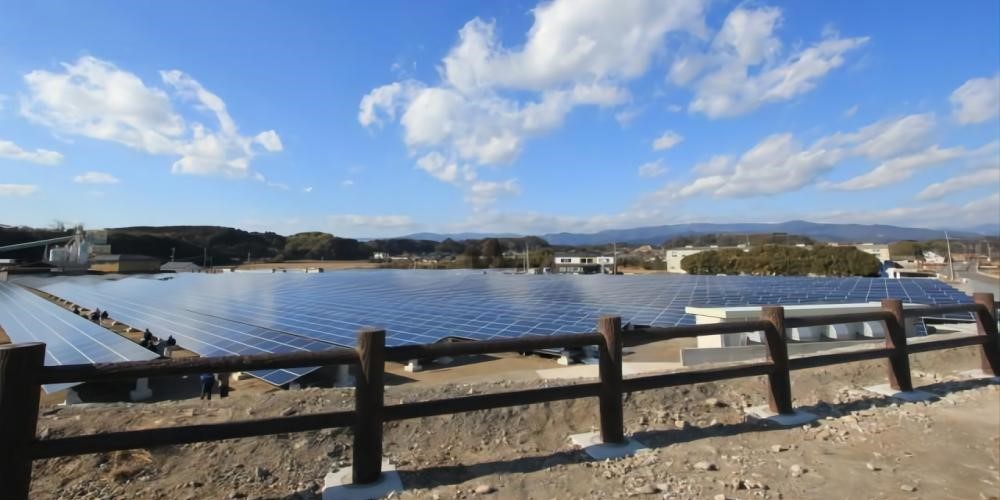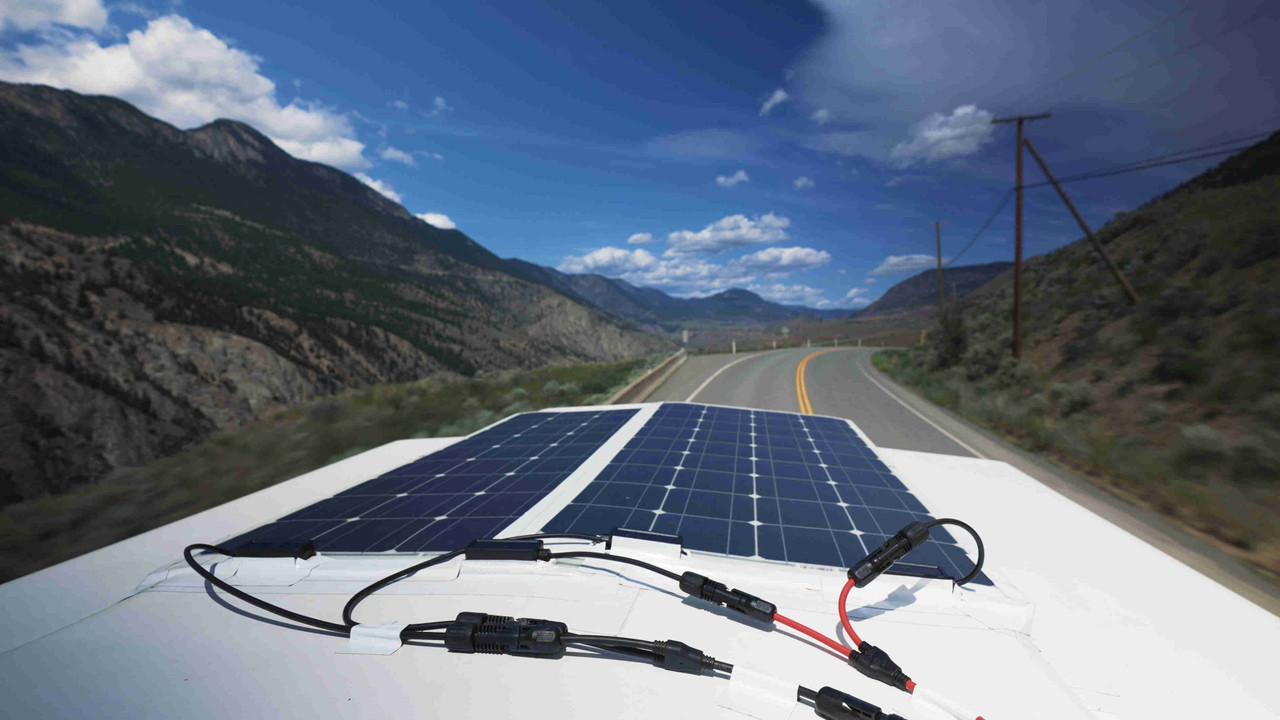PV Array Voltage and Size: What You Need to Know
If you’re hoping to design your own PV array to harness clean, renewable energy, there’s a good chance you’re feeling a little lost. PV arrays are one of the best ways to get off-grid or provide your home with power in case of emergency. The trouble is actually designing your system. Suddenly, you need to know things like “array voltage” and “PV voltage” just to figure out how many panels you should install.
While learning the ins and outs of PV array voltage can be tricky at first, the results are worth the effort. You’ll be one step closer to energy independence and enjoy a little security during future blackouts. Or, you can outfit an RV with solar panels and take some green energy on the go.
What is PV?
Generally, Photovoltaics (PV) refers to photovoltaic generation systems, which use solar cells to convert irradiance into electricity. For example, a solar panel can be called PV panels.
What is a solar array?
Generally, a solar array is a collection of multiple PV(photovoltaic) panels that produce electricity power, solar array is usually made use of massive solar panel groups, nonetheless, it can be utilized to define nearly any type of group of solar panels for any scenario, today we will talk about everything about PV(photovoltaic) array voltage and size that you need to know, you can also learn how to wire solar panels in series vs parallel here.
What Is Array Voltage?
When building a PV array, you need a few important numbers. These numbers are your inverter's maximum input voltage and your PV array voltage. Your PV array voltage is the total voltage of all of your modules when connected in a series. The more modules connected in series, the higher your array voltage.
This is important because the more modules you have, the more power you can generate. The more power you have, the more you can store or use to stay off-grid. However, your power generation is limited by your inverter’s maximum input voltage. If you don’t know your PV array voltage and you oversize your PV array, you risk overloading your inverter.
If you overload your inverter, there’s a chance that problems will occur, and your electrical system will suffer damage as a result. Even worse, damage caused by an overloaded inverter could potentially lead to an electrical fire. No matter what, a damaged PV array is no good, so it’s wise to start with an array that’s sized appropriately.
How you connect your modules affects your PV array voltage. Modules can be connected in series, in parallel, or in a combination.
When connected in series, adding the voltage of each module will get you your total array voltage. However, when connected in parallel, the voltage is simply the voltage of a single module.
Keep in mind that modules connected in parallel will still affect the total amperage of the array. Typically, it’s recommended to connect modules in series to maximize output.
The arrangement of your modules will depend on how much output you want, how much space you have, and where you install your modules. With a properly assembled PV array maximizing PV array voltage, you can lessen your dependence on the grid, create a battery backup system, or get off the grid entirely.
When building your array, it is very important to keep your modules uniform. Once you choose a module, stick with the manufacturer of that module. Don’t mix manufacturers, even when power and voltages are the same. While it can be tempting, especially if it seems like it will save you some money, you will most likely lose precious efficiency.
A system that isn’t as efficient as possible is a waste, so get the most value by sticking with one manufacturer.

What Is PV Voltage?
PV voltage, or photovoltaic voltage, is the energy produced by a single PV cell. Each PV cell creates open-circuit voltage, typically referred to as VOC. At standard testing conditions, a PV cell will produce around 0.5 or 0.6 volts, no matter how big or small the cell actually is.
Keep in mind that PV voltage is different from solar thermal energy. While it can be easy to confuse or conflate the two terms, they refer to energy generated through different processes.
Solar thermal energy is generated with solar thermal panels, which rely on sunlight to heat fluid media like oil, water, or air. Instead, PV arrays rely on the photovoltaic effect to generate power. The photovoltaic effect describes a process of voltage generation where a charge carrying material is exposed to light, causing the excitation of electrons.
Voltage at open circuit can be found with a multimeter or a voltmeter when the module isn’t under load. You can find this number on the module’s datasheet, also. Keep this number handy for later in case you need to calculate the size of the PV array you’re hoping to build.
Just like regular AC power, you can use PV voltage to power whatever you like. With a battery bank and a grid-tied system, you can create a very effective energy backup system for blackouts or emergencies. All you need to do is switch over to your battery banks while you’re off the grid.
With some RV solar panels, you could easily enjoy a powered camping trip. With a large enough battery bank, you could potentially go off-grid for good.
How Do You Calculate PV Voltage?
Calculating PV voltage is very important when determining the size of your PV system. The reason this is so important is because voltage has an inverse relationship with ambient temperature.
When it gets colder in your area, your string of panels will produce more voltage. When it’s hot outside, the voltage produced by your panels will go down. If you mistakenly put together a system that exceeds the maximum input voltage of your inverter, you can potentially damage your electrical and cause a fire.
This is why we start by finding the Module Voc_max, the max module voltage, when correcting for the lowest expected ambient temperature at the install site. To find the Module Voc_max, you’ll need to plug in a few details into the following formula:
Module Voc_max = Voc x [1 + (Tmin - T_STC) x (Tk_Voc/100)]
Let’s start with VOC. VOC is the rated open current voltage for your modules, which can be found on their datasheet. The lowest expected ambient temperature is Tmin. A little bit of research on your area’s climate should reveal that. Next is T_STC. That’s the temperature at standard test conditions, which is always 25°C.
Lastly, Tk_Voc is the temperature coefficient of the module’s open-circuit voltage. This is usually found as a %/°C on the module’s datasheet, and it is always expressed as a negative number.
Once you have your max module voltage, all you need is the max voltage input for your inverter. Typically, you can find this on the inverter’s datasheet. From here, divide your inverter’s max input voltage by your Module Voc_max, and you will end up with the maximum string size for your array. The resulting number will let you know how big your array string size can be.
How Do You Calculate Solar Array Voltage?
Finding your solar array voltage depends entirely on your system design. You can either connect your modules in series or parallel, with series being the most common style. If you connect your modules in series, add up the voltage of each module. It’s as simple as that. In this case, your solar array voltage is always the total voltage of all of your panels.
Connecting your modules in parallel is just as simple but entirely different. When connected in parallel, you need to add up the amps of each panel, as amperage is the only thing that changes. In this case, solar array voltage is always the voltage of an individual panel, regardless of how many you have connected.
Calculating your solar array voltage is critical if you’re designing your system yourself. This is because having too many panels in a series can exceed your inverter’s maximum input voltage and that is usually a bad idea.
With the inverter being one of the most critical parts of your PV system, you can’t afford to damage it. Without it, you won’t be able to convert the energy produced by your PV array into a usable AC (alternating current).
Become Energy Independent Today
Once you have the numbers down, you can safely move on to designing your own PV system. Now, all you’ll need to do is decide whether you want it ground-mounted or roof-mounted. After that, it’s just a matter of connecting it with your existing electrical.
If any of this makes you feel unsure about your installation capabilities, don’t worry. Most electricians will be able to help you with a PV array installation. However, if you want to learn more or expand the capabilities of your PV system, we’re here for you.
Explore all of our educational videos, resources, and articles about topics like net metering to find out what a solar array can really do for you. Get off the grid entirely with a tiny home solar system. Add battery banks to your system to store power to use less grid power, or stay powered during blackouts. You can even use a portable solar generator to power devices while hiking or traveling.
See our other related articles to learn more:
Solar Panels 101: A Beginner's Guide
The Ultimate Guide To DIY Off-Grid Solar Systems
Do solar panels increase home value
how efficient are solar panels
How Many Solar Panels Do I Need








